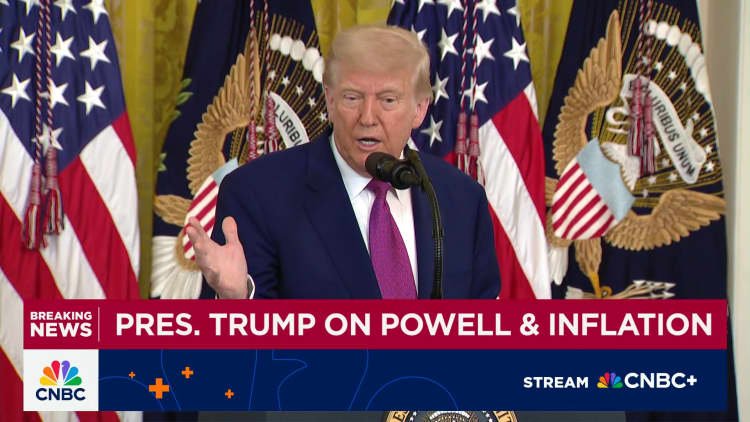Tensions Rise Between White House and Federal Reserve
As the Federal Reserve prepares for its upcoming meeting, a notable rift appears to be developing between the White House and the central bank, leaving consumers in a precarious position.
Trump Critiques the Fed
Recently, President Donald Trump publicly criticized Federal Reserve Chair Jerome Powell, labeling him a "numbskull" for not implementing interest rate cuts. Trump has urged the Fed to consider reducing rates by a full percentage point, expressing this sentiment through a recent post on Truth Social, where he encouraged the Fed to take bold action.
Vice President JD Vance echoed the president’s statements on social media, emphasizing that the Fed’s reluctance to cut rates constitutes "monetary malpractice," especially following a recent inflation report that showed slightly better-than-expected figures.
Economic Implications of High Rates
The President argues that keeping the federal funds rate at elevated levels restricts borrowing for both businesses and consumers, putting the nation at an economic disadvantage compared to countries with lower rates. The federal funds rate, which determines what banks charge each other for overnight loans, influences various borrowing and saving rates consumers encounter.
Despite the mounting political pressure, Trump’s opinions have not swayed the Federal Reserve’s decisions. Analysts predict that the Fed is likely to maintain its current benchmark rate during next week’s meeting.
Current Federal Reserve Stance
Since December, the federal funds rate has been targeted between 4.25% and 4.5%. Expectations indicate there’s little chance of a rate cut at the upcoming meeting, based on data from the CME Group’s FedWatch tool. Powell stated last month that the federal funds rate is expected to remain elevated as the economy evolves and policy adapts. He has consistently maintained that political pressures will not influence the Fed’s policy choices.
Trump, who appointed Powell as chair in 2018, has been vocal in his criticism of the Fed’s decision-making process.
The Complexities of Lower Interest Rates
Market insights suggest that a reduction in interest rates may not be on the table until at least September. If the Fed does lower rates, it could lead to decreased borrowing costs for consumers, a change some would welcome. However, Greg McBride, chief financial analyst at Bankrate, cautions that lower rates are sometimes idealized from a borrower’s standpoint.
"The rationale behind decreasing rates is crucial," McBride noted. "We want the Fed to act only when inflationary pressures begin to lessen."
Currently, inflation remains above desired levels, creating a challenging landscape. Mark Higgins, a senior vice president at Index Fund Advisors, warns that prematurely cutting rates could reverse any progress made in reducing inflation. He pointed out that Trump is pushing for lower rates at a time when the Fed has limited flexibility to act.
Consideration of Economic Tariffs
Despite somewhat encouraging inflation data, officials at the Federal Reserve have indicated they will wait for a clearer picture regarding Trump’s tariff policies before making any decisions on rate cuts. The White House has asserted that tariffs won’t trigger rampant inflation, suggesting that foreign producers will absorb much of those costs. Nevertheless, many economists believe the complete impact of these tariffs may manifest later in the summer as inventory levels decrease.
For consumers looking for relief in borrowing costs, maintaining the current monetary policy could be more beneficial. Higgins emphasizes the danger of acting hastily, noting that a premature rate reduction might stoke inflation again, necessitating another increase.
As the ongoing dialogue between the White House and the Federal Reserve unfolds, the complexities surrounding interest rates continue to spark debate and concern. The final decision rests on balancing economic growth aspirations with the need to control inflation, a tightrope that both entities must navigate carefully.
